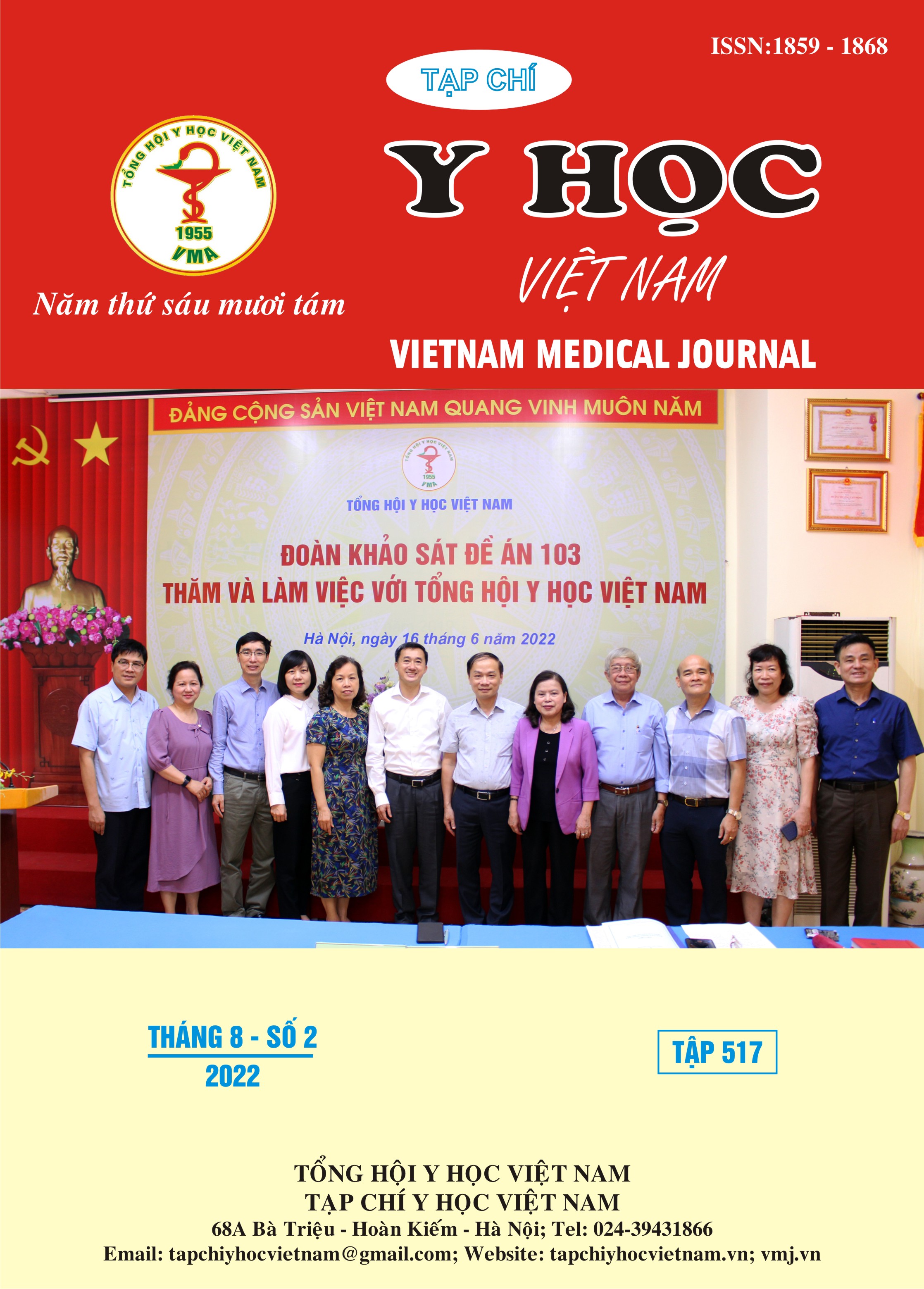SURVEYING THE COLORECTAL POLYPOID LESION BY ENDOSCOPY AND HISTOPATHOLOGY AT PHARMACY AND MEDICAL CAN THO UNIVERSITY HOSPITAL
Main Article Content
Abstract
Background: The development of flexible endoscopic procedures has made it possible to diagnose, identify, and monitor patients with colorectal polyps more successfully. Endoscopy enables direct observation of the inner surface of the colon, enabling the identification of colorectal polyps and the simultaneous performance of polypectomy while also identifying their shape, size, location, quantity, and concomitant pathologies. histopathology-related biopsies Most colorectal polyps are benign, but some, particularly adenomatous polyps, might become cancerous. Objective: Using endoscopic examination and the pathology of colorectal polypoid lesions at the hospital of the Can Tho University of Medicine and Pharmacy, ascertain the incidence of colorectal polyps. Research topics and procedures: At the Hospital of the Can Tho University of Medicine and Pharmacy, cross-sectional descriptive research was conducted on 80 patients who satisfied the diagnostic criteria and whose endoscopic and histological results revealed colorectal polyps. Result: Sessile colorectal polyps were found in 67.2% t of individuals who underwent endoscopy, with the sigmoid colon being the most frequent site (38.1%). There were 27 patients with numerous polyps out of the 80 patients who had been discovered, 53 individuals with solitary polyps (66.3%), and 27 patients with multiple polyps (33.7%). Most cases included polyps less than 10 mm in size (83.6%). The research team's polyp surface analysis revealed that 78.4% of the group's polyps had smooth surfaces, 15.7% had congestive edematous surfaces, and 5.9% had rough surfaces. There are 60% non-neoplastic polyps and 40% neoplastic polyps in terms of histology. There are 9/80 individuals, or 11.3%, who have dysplastic polyps. Conclusion: According to the study's findings, 38.1% of the 80 individuals with polyps had them in their sigmoid colon, 25.4% had them in their rectum, 40% of neoplastic polyps, of which 81.3% were ductal adenomas, 6.3% were branch ductal adenomas, 3.1% were branch adenomas, and 9.3% were cancerous polyps, 100% were dysplasia in the neoplastic polyps, presented urgent issues for periodic health examinations of people aged 40 and older, particularly in cases of bloody diarrhea and persistent abdominal pain for early detection and treatment of colorectal polyps to avoid the risk of developing into cancer.
Article Details
Keywords
coloreactal polys, endoscopy, histopathology
References
2. Nguyễn Quốc Bảo (2016), Nghiên cứu đặc điểm lâm sàng , nội soi và kết quả điều trị của bệnh lý polyp đại trực tràng tại Bệnh viện Đa khoa Trung ương Cần Thơ năm 2015 - 2016, Luận văn tốt nghiệp Bác sĩ đa khoa, Trường Đại học Y Dược Cần Thơ.
3. Nguyễn Thị Chín & Nguyễn Hoàng Quân (2013), Nghiên cứu đặc điểm lâm sàng, hình ảnh nội soi và mô bệnh học của bệnh polyp đại trực tràng tại Bệnh viện Việt Tiệp Hải Phòng, Y học thực hành, 899(12), tr 31-37.
4. Tống Văn Lược (2002), Nghiên cứu kết quả cắt polyp đại tràng qua nội soi bằng điện nhiệt theo hình ảnh nội soi và mô bệnh học, Luận án Tiến sĩ Y học, Đại học Y Hà Nội.
5. Dư Huỳnh Hồng Phong (2015), Đặc điểm lâm sàng, hình ảnh nội soi, mô bệnh học và kết quả điều trị cắt polyp đại tràng qua nội soi tại Bệnh viện Trường Đại học Y Dược Cần Thơ, Luận văn chuyên khoa cấp II, Trường Đại học Y Dược Cần Thơ.
6. Ates, O., Sivri, B. & Kilickap, S. (2017), Evaluation of risk factors for the recurrence of colorectal polyps and colorectal cancer, Turk J Med Sci, 47(5), pp. 1370-1376.
7. Bas, B., Dinc, B., Oymaci, E., Mayir, B. & Gunduz, U. R. (2015), What are the Endoscopic and Pathological Characteristics of Colorectal Polyps?, Asian Pac J Cancer Prev, 16(13), pp. 5163-5167.
8. Iravani, S., Kashfi, S. M., Azimzadeh, P. & Lashkari, M. H. (2014), Prevalence and characteristics of colorectal polyps in symptomatic and asymptomatic Iranian patients undergoing colonoscopy from 2009-2013, Asian Pac J Cancer Prev, 15(22), pp. 9933-9937.
9. Nam, Y. J., Kim, K. O., Park, C. S., Lee, S. H. & Jang, B. I. (2017), Clinicopathological features of colorectal polyps in 2002 and 2012, Korean J Intern Med.
10. Silva, S. M., Rosa, V. F., Santos, A. C., Almeida, R. M., Oliveira, P. G. & Sousa, J. B. (2014), Influence of patient age and colorectal polyp size on histopathology findings, Arq Bras Cir Dig, 27(2), pp. 109-113.


